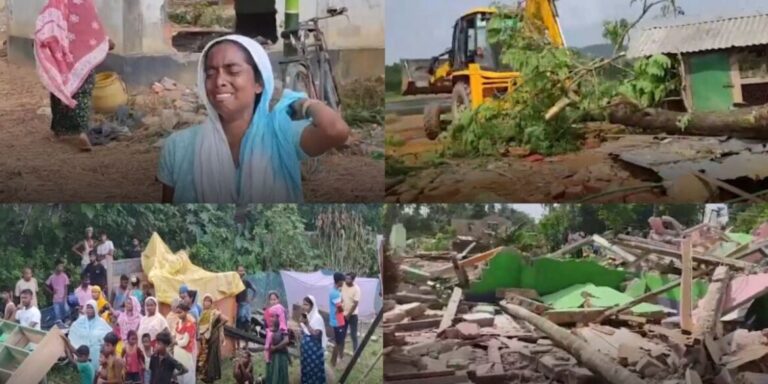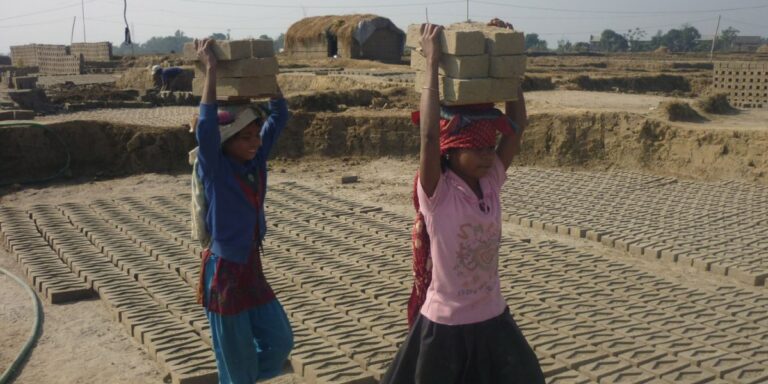This week, two major news stories emerged that reveal the true social condition of the Dalit community and expose the mindset of the non-backward (upper caste) sections of society. These incidents offer just a glimpse, but each one, in itself, proves that no matter how high a Dalit individual rises—based on merit or intellect—caste-based discrimination continues to follow them.
First Incident: Attack on Chief Justice B.R. Gavai (6th October 2025)
The first incident involves the recent attack on the Chief Justice of India, Hon’ble B.R. Gavai, where a shoe was thrown at him, and both he and the highest post in the Indian judiciary were insulted. The attacker has been identified as Rakesh Kishore Tiwari (as confirmed by senior journalist Nikhil Wagle on his YouTube channel). This incident is highly condemnable, especially since the attack occurred during a court hearing presided over by the Chief Justice himself.
Tiwari claimed he was offended by a statement made by Justice Gavai during a court proceeding—although the judge had already clarified his comments. After the incident became public, many non-backward individuals used social media to openly insult the Chief Justice. In one image, a person resembling Justice Gavai was depicted with his face painted blue and a pot hanging from his neck. The blue color is symbolic of the Dalit identity, while the pot around the neck refers to the inhumane treatment Dalits suffered during the Peshwa era, when they were forced to carry such pots.
At a time when a civilized society should have condemned the attack, instead, many non- backward people embraced uncivilized behavior and took pride in dehumanizing acts, thereby insulting the entire Dalit community.
Even earlier, during his visit to Mumbai after becoming Chief Justice, Justice Gavai’s protocol was reportedly ignored—something he himself regretted during a public event. In response, senior officials from the police, law, and home departments later paid him a courtesy visit to make amends.
These incidents highlight that even those in the highest positions are not spared from caste-based discrimination. It clearly shows that the casteist mentality is still deeply ingrained in the minds of many non-backward people.
Second Incident: Death by Suicide of IPS Officer Y. Puran Kumar (7th October 2025)
The second incident involves IPS officer Y. Puran Kumar, who died by suicide. This was not due to work pressure, as is commonly seen in the police force, but entirely due to caste-based discrimination. This has been made clear in a letter left by the officer, which led to the filing of cases against 13 officials for mental harassment and abetment to suicide (as reported by The Lallantop News).
A close look at the incident shows that IPS Puran Kumar had been battling caste discrimination for many years. His immediate superiors were allegedly involved in casteist behavior towards him. The letter revealed that he had been denied salary benefits, promotions based on seniority, and leaves, and he had to endure caste-based taunts on multiple occasions. All of this is deeply painful and disheartening.
Wider Implications
These two incidents demonstrate how non-backward communities in India continue to uphold caste-based discrimination. The fact that even government officers working within the state apparatus and for the Constitution are targeted shows just how deeply rooted and powerful the caste system remains. It is a national shame for a so-called “developed India”, and it highlights that if people in such high positions are subjected to this, ordinary Dalits are far from achieving justice and equality.
Despite all this, Brahmanical ideologies continue working to weaken the constitutional safeguards granted to Dalits. Social humiliation is just the visible face of caste-based oppression. There is a systematic attempt to prevent Dalits from achieving social, economic, educational, and political progress.
- In education, rising costs are pushing Dalit students out of schools again. Those who manage to attend still face caste discrimination.
- In social spaces, Dalits often have to hide their identities, as revealing them leads to discrimination and humiliation.
- In economic spheres, Dalits are labeled as unskilled, quota-dependent, or lazy—robbing them of opportunities.
- In politics, Dalit issues are often ignored, and their leaders are portrayed as mere tools of major political parties, creating doubt around their credibility.
This oppressive Brahmanical ideology has become so extreme that Dalits abroad, too, face caste discrimination—as seen in the Cisco caste discrimination case in the U.S.
On Supreme Court’s Creamy Layer Comment
Recently, the Supreme Court’s remarks about introducing the creamy layer concept for Scheduled Castes are being seriously considered by several governments. However, these governments often forget that reservation for SCs is based on caste discrimination, not economic status—as is the case with the Economically Weaker Sections (EWS).
The attacks on Chief Justice Gavai and the death of IPS Y. Puran Kumar prove that even economically well-off Dalits continue to face discrimination, which directly impacts their representation. The Dalit struggle is not economic, but social.
Conclusion
Both incidents happened one after the other, without even a day’s gap. This shows the extent and persistence of the discrimination and atrocities faced by the Dalit community. All this makes life extremely challenging for Dalits. Although the community continues to unite and resist, recurring incidents like these create ongoing social tensions in the country. Such circumstances prevent Dalits from feeling truly free—even in independent India
(The views and opinions expressed in this article are those of the author and do not necessarily reflect the official policy or position of Free Voice.)




